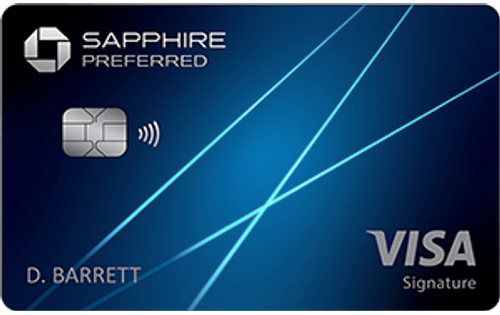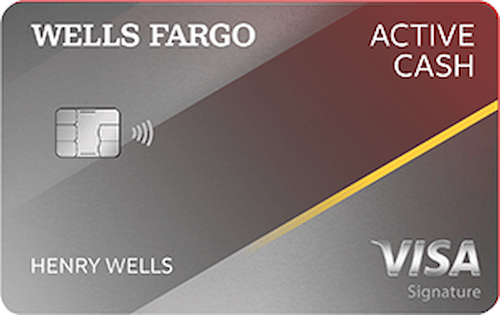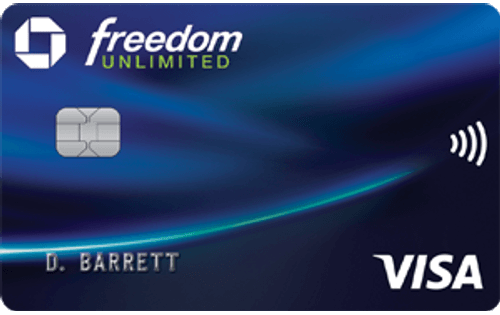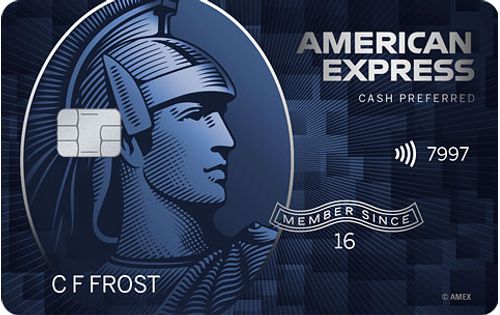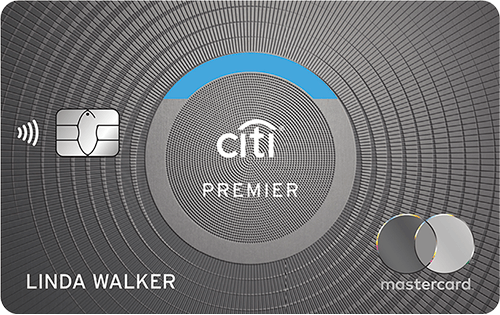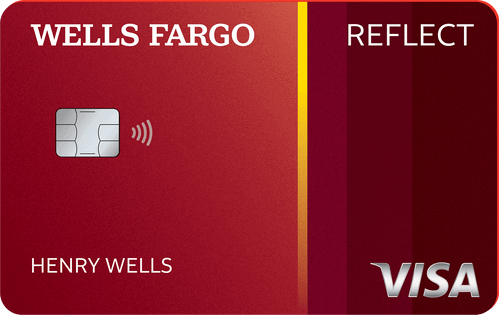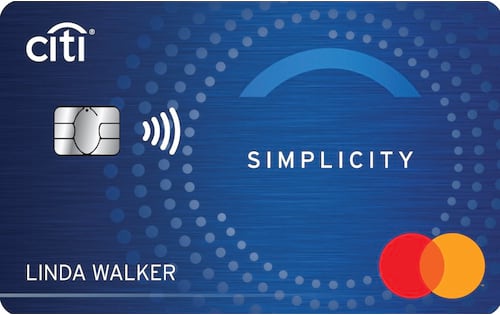- Our picks
- How we picked the best credit cards for good credit
- Tips for choosing a credit card for good credit
- Beginner’s guide to credit cards for good credit
- Sources
- About the author
- User questions & answers
- Expert opinions
Our Picks for the Best Credit Cards for Good Credit
At the end of the day, finding the best credit card for good credit is both easy and hard at the same time. On the one hand, the best credit cards for people with good credit are pretty much the best credit cards overall. So you almost have your pick of any card that catches your eye. But all the options can make it tough to choose, considering how many good deals are available. That’s why WalletHub’s editors compared 1,500+ offers and picked the best credit cards for good credit in different categories.
Side-by-Side Comparison of the Best Credit Cards for Good Credit
| Credit Card | Best For | Rating |
| Chase Sapphire Preferred® Card | Overall | 5/5 |
| Capital One Venture Rewards Credit Card | Travel Rewards | 5/5 |
| Wells Fargo Active Cash® Card | Cash Back | 5/5 |
| Wells Fargo Reflect® Card | Long Intro APR | 4.8/5 |
| Ink Business Premier® Credit Card | Business | 4.8/5 |
Good credit is great, and it will save you hundreds of dollars per year relative to bad credit. But it’s not excellent. So make sure to use your new credit card responsibly, and pretty soon you’ll be able to enjoy excellent credit, Top WalletFitness and the serious savings that come along with them. Sign up for a free WalletHub account to track your progress and get personalized tips that should help along the way.
Picks by Credit Score
- Best credit cards for 700 credit score
- Best credit cards for 710 credit score
- Best credit cards for 720 credit score
- Best credit cards for 730 credit score
- Best credit cards for 740 credit score
How We Picked the Best Credit Cards for Good Credit
In order to identify the best credit cards for people with good credit, WalletHub’s editors compare all of the cards for which people with good credit scores are eligible from our database of 1,500+ credit card offers. After excluding cards not suitable for people with credit scores ranging from 700 to 749, we evaluate how much each card is likely to save the average person over the course of multiple years.
In doing so we consider the cards’ rewards, interest rates, fees, secondary benefits, specific approval requirements and other key WalletHub Rating components. Furthermore, in light of the varied needs of credit card shoppers with good credit scores, we select the best cards in a range of popular categories, from initial bonuses and everyday rewards to cards with no annual fee or no interest for a long introductory period. In any case, our aim is to maximize your savings.
How Two-Year Cost Is Calculated
Two-year cost is used to approximate the monetary value of cards for better comparison and is calculated by combining annual and monthly membership fees over two years, adding any one-time fees or other fees (like balance transfer fees), adding any interest costs, and subtracting rewards. Negative amounts indicate savings. When fees or other terms are presented as a range, we use the midpoint for scoring purposes.
Rewards bonuses and credits have been taken into account for two-year cost calculations. However, bonuses applicable to only a very small portion of cardholders are not considered. For example, credits and bonuses awarded for spending or redeeming rewards through a company portal with non-co-branded cards have not been taken into account. Similarly, bonuses and credits related to spending with specific merchants using a non-co-branded card have not been taken into account (for example, if Card A offers credits with DoorDash, this feature would not be factored into calculations because it is hard to assess how many cardholders would use the benefit or exactly how much value they'd get from it).
Cardholder Spending Profiles
Given that different users have different goals and are likely to use their credit cards differently, we identified spending profiles that are representative of different users’ financial priorities and behaviors. For each cardholder type, we have assumed a specific amount of monthly spending by purchase type (e.g., groceries, gas, etc.), as well as an average balance, balance transfer amount, amount spent on large purchases and average monthly payment. Spending assumptions are based on Bureau of Labor Statistics data for consumers and PEX data for businesses.
Sources
WalletHub actively maintains a database of 1,500+ credit card offers, from which we select the best credit cards for good credit for different applicants as well as derive market-wide takeaways and trends. The underlying data is compiled from credit card company websites or provided directly by the credit card issuers. We also leverage data from the Bureau of Labor Statistics to develop cardholder profiles, used to estimate cards’ potential savings.
Beginner’s Guide to Credit Cards for Good Credit
What Is Good Credit?
Good credit is a credit score of 700 - 749. A score in this range indicates that you are a responsible borrower, and it should qualify you for most loans and lines of credit. If you continue to manage your financial obligations responsibly and pay the bills on time, you should ultimately graduate to an excellent credit score of 750+.
You can use our free credit score simulator to see how long it will take you to reach the next credit score tier. You can also learn more from our guide to good credit.
Why Is It Important to Have a Good Credit Score?
Having a good credit score is important because it can save you a lot of money and create new opportunities in your life. Good credit can save you hundreds, or even thousands, of dollars per year on your mortgage, auto loan, credit cards and car insurance. Having a good credit history also makes it easier to rent an apartment, land certain jobs, or even find a spouse.
Learn more about why good credit is important.
How to Get a Good Credit Score
To get a good credit score, you need to consistently add positive information to your credit report for a few years. The easiest way to do this is to open a credit card account and manage it responsibly. Below, you can see the basic steps that you should take.
- Get a Low-Cost Credit Card.
You can get approved for a credit card even if you have bad credit or no credit history. You just need to choose the right card. The best credit cards for building credit tend to have easy-to-satisfy approval requirements and $0 annual fees. Not having to pay an annual fee allows you to keep your account open for longer than you might otherwise, and you won’t feel pressured to make a lot of purchases just to get your money’s worth.
- Pay Your Bills on Time Every Month.
Payment history affects your credit score more than anything else. Paying your credit card bills on time every month will gradually carry you to good credit, assuming negative information isn’t reported about other types of bills being delinquent.
- Keep Your Credit Utilization Low.
Using less than 30% of your credit limit is good for your credit score, and utilization below 10% is best. Your credit utilization is calculated using the balance listed on your monthly account statement and your credit limit, and it’s calculated for each credit card individually as well as for all of them together.
If you’re close to good credit, reducing your credit utilization is a quick and easy way to get over the hump. On that note, it’s worth pointing out that you don’t actually need to make purchases with your credit card to improve your credit score. As long as you pay any membership fees your card charges, you’ll get credit month after month for your account being in good standing.
-
Review Your Progress and Adjust as Needed. Keeping track of what shows up on your credit report and how your credit score reacts can teach you a lot. It also gives you the opportunity to spot any errors or signs of fraud. Similarly, reviewing your monthly credit card statements allows you to dispute any unauthorized charges and avoid paying for them.
How Long Does It Take to Get a Good Credit Score?
It usually takes a few years to build a consistently good credit score from scratch. If you have fair credit, on the other hand, you could reach good credit in a matter of days or months, depending on your exact score, the status of your credit accounts, and when your creditors report to the credit bureaus.
A lot ultimately depends on the specifics of your situation. You can get a personalized answer to this question using our free credit score simulator.
How to Keep a Good Credit Score
To keep a good credit score, you just need to keep up the activities that got you to good credit in the first place. Most importantly, you need to continue paying your bills on time, and you should avoid increasing your credit utilization. Similarly, be careful about applying for new loans and lines of credit if maintaining a good credit score is your top priority. Applying for new credit will cause your credit score to drop temporarily.
If you want to learn how to not only maintain a good credit score but actually improve to excellent credit and chase a perfect credit score, check out the Credit Analysis portion of your free WalletHub account.
Are Credit Cards for Good Credit Worth It?
Credit cards for good credit are worth it if you have a credit score of 700 or higher. Such a score will give you high odds of approval for a credit card that requires good credit at a minimum, and even people with excellent credit should consider the best of these offers.
Many of the best credit cards on the market right now are available to people with good or excellent credit. These cards can save the average person more than $1,500 over the first two years of use, according to WalletHub’s calculations.
For more information, check out our breakdown of the pros and cons of credit cards.
Tips for Choosing the Best Credit Card for Good Credit
- Double-Check Your Credit Score.
If you think you have good credit but haven’t checked your score for a while, you can see your latest score on WalletHub. Knowing exactly where you stand will make it easier to determine which credit card offers are worth comparing.
- Decide Whether to Focus on Rewards or Low Rates.
Credit cards that excel in both areas are fairly rare, so it’s best to choose between one or the other. You should focus on rewards if you plan to use the card for everyday expenses and pay the bill in full every month. If you want to do a balance transfer or finance big-ticket purchases, comparing cards’ interest rates and relevant fees makes more sense. You can always get an everyday rewards card for other purchases later.
- Compare Lots of Offers.
You can use the filters on this page to narrow down your options. You can also check out WalletHub’s editors’ picks for the best cash back, travel rewards, and 0% APR credit card offers, and use those recommendations as a starting point. Plus, you can read thousands of credit card reviews on WalletHub.
- Estimate Your Potential Savings.
It can be hard to compare credit card rewards given that some cards offer points or miles while others offer cash back. Plus, some cards charge annual fees while others don’t. The best approach is to convert everything to dollars and, ultimately, expected savings.
In other words, estimate how much you’ll spend in a year, calculate how many points or miles that will earn you with each card, and then multiply the sum by the card’s average point/mile value. If a card issuer does not list point/mile values, you should be able to find that information on WalletHub. You can then subtract any fees from your expected rewards savings in order to compare offers based on total expected savings. Things are a bit easier with interest rates. You can just use WalletHub’s credit card payoff calculator or balance transfer calculator to plan out your monthly payments and see which cards will save you the most money.
- Take Advantage of the Best Deals While They Last.
People with good credit have a good shot at qualifying for the best credit cards on the market. That includes limited-time promotions involving big initial bonuses and 0% introductory APRs. You might think these sorts of deals are always available, but they often become less attractive and harder to get during economic downturns. As a result, you shouldn’t wait too long if you find an offer that appeals to you. As long as you don’t expect to apply for a mortgage or auto loan in the near future, the slight hit to your credit from a new credit card application shouldn’t cost you.
